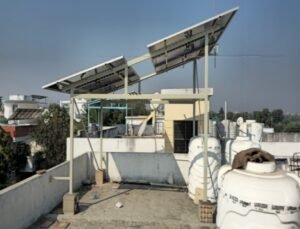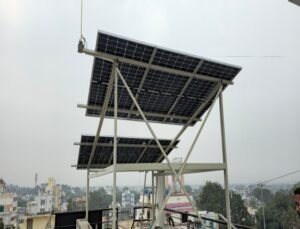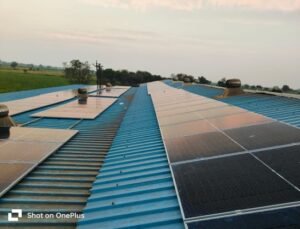Switching to solar energy is a smart way to reduce electricity bills and support a sustainable future. Many Jalgaon residents ask, “How many kW of solar panels do I need?” To determine the right solar panel size, factors like energy consumption, roof space, and sunlight availability must be considered. In this guide, learn how to calculate the ideal solar capacity for your home and maximize savings!
Step 1: Assess Your Electricity Consumption
To determine the right solar panel size, start by evaluating your monthly electricity usage. Check your electricity bill for total consumption, measured in kilowatt-hours (kWh).
✅ Example Calculation:
- Monthly Usage: 300 kWh
- Annual Usage: 300 kWh × 12 months = 3,600 kWh/year By understanding your energy needs, you can choose the ideal solar system to maximize savings.
Step 2: Determine the Right Solar Panel Capacity
Solar panels come in different capacities, and their efficiency depends on sunlight exposure. In sunny regions like Jalgaon, a 1 kW solar system generates an average of 4–5 kWh per day.
✅ Calculation Formula:
If 1 kW of solar panels produces 4.5 kWh/day, and your annual consumption is 3,600 kWh, then:
Required Solar Capacity = 3,600 kWh ÷ (4.5 kWh/day × 365 days)
By calculating the right solar panel size, you can ensure optimal power generation for your home.
Determining the right solar panel size involves evaluating your electricity usage, panel efficiency, and roof space. A well-planned system ensures maximum savings and sustainability.
🔹 Avidor Innovation offers expert consultation to help you choose the best solar solution tailored to your needs.
✅ Get a personalized solar assessment today!
Step 3: Calculate Required Roof Space
To install solar panels, you need sufficient rooftop space. On average, 1 kW of solar panels requires 100 sq. ft. of space.
✅ Key Considerations:
- Ensure your roof has enough unshaded open space
- .South-facing rooftops receive maximum sunlight, making them ideal for installation.
Proper space planning ensures efficient solar energy production and maximum savings.
Step 4: Estimate Future Energy Needs
When planning your solar panel installation, consider potential increases in electricity consumption due to:
✅ Adding new appliances (e.g., refrigerators, washing machines)
✅ Purchasing an electric vehicle (EV)
✅ Installing air conditioners or heating systems
To ensure long-term energy efficiency, it’s wise to install a slightly larger solar system that can accommodate future power needs.



Step 5: Evaluate Government Subsidies and Benefits
The Indian government offers solar panel subsidies through schemes like the PM Surya Ghar Muft Bijli Yojana, making solar energy more affordable.
✅ Key Benefits:
Financial assistance for solar panel installation
Reduced upfront costs with government incentives
Lower electricity bills through subsidy programs
Avidor Innovation can guide you through the application process and help you maximize your savings.


Leave a comment